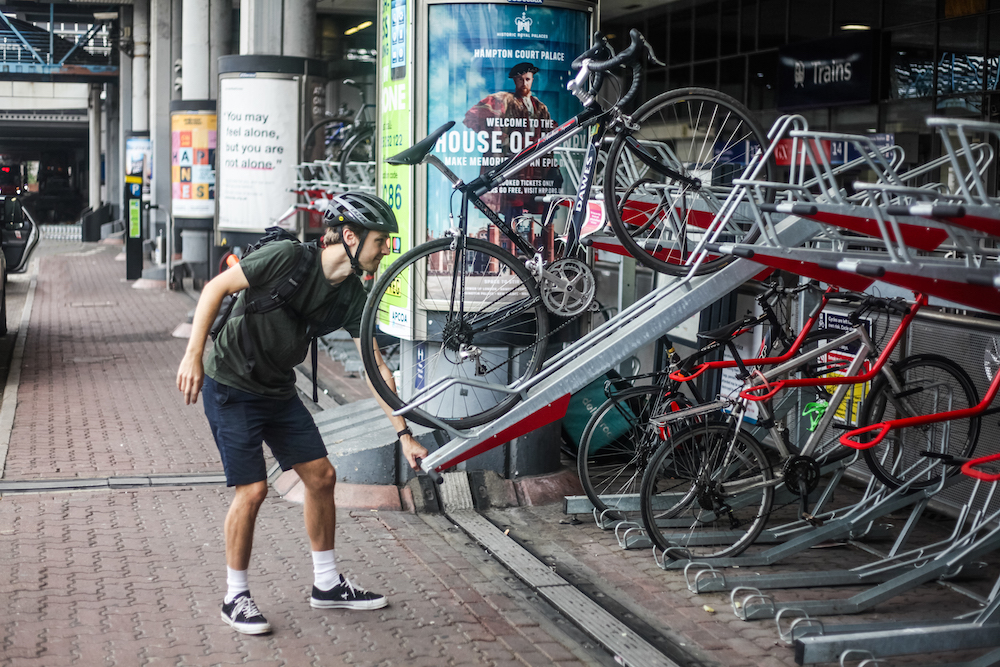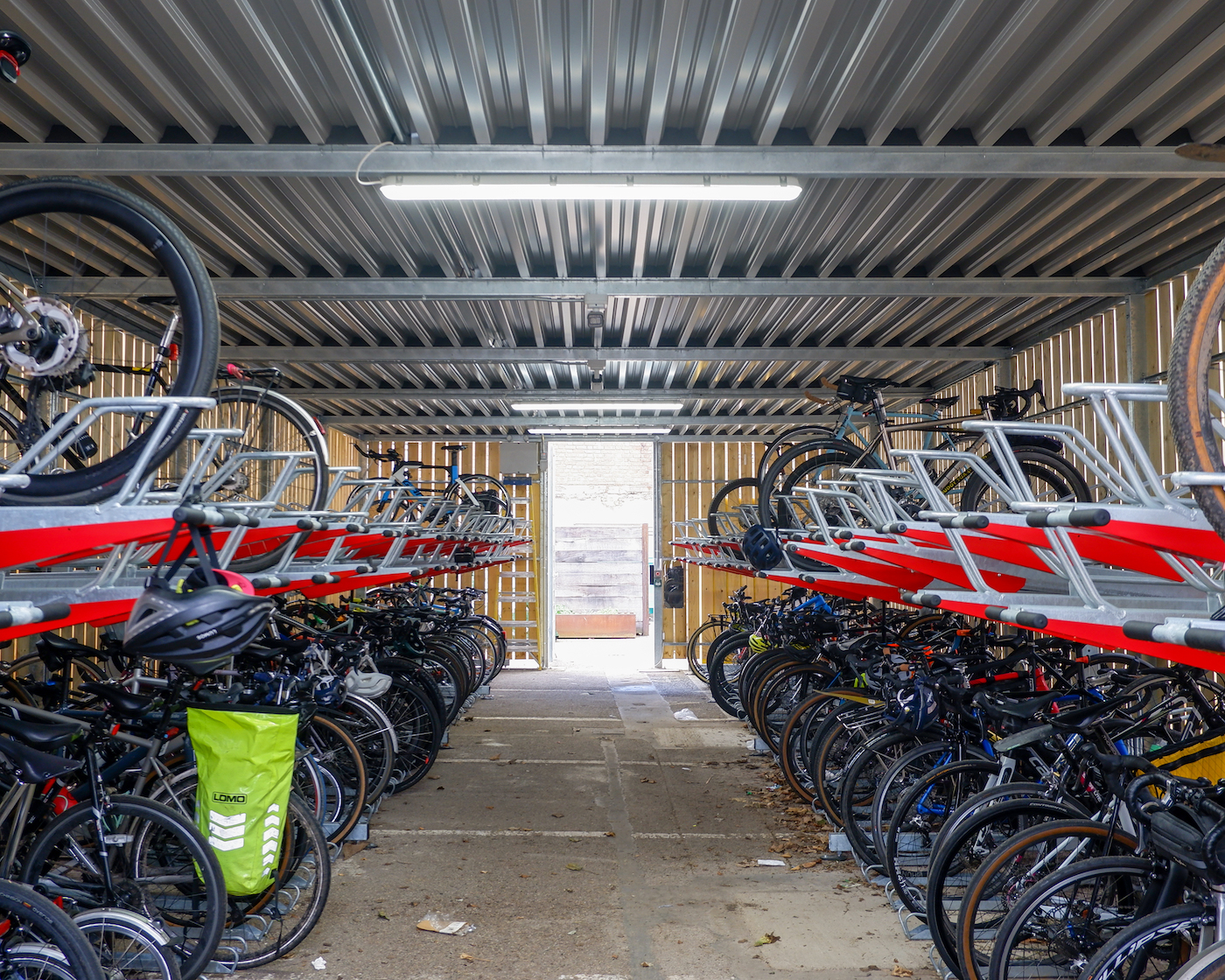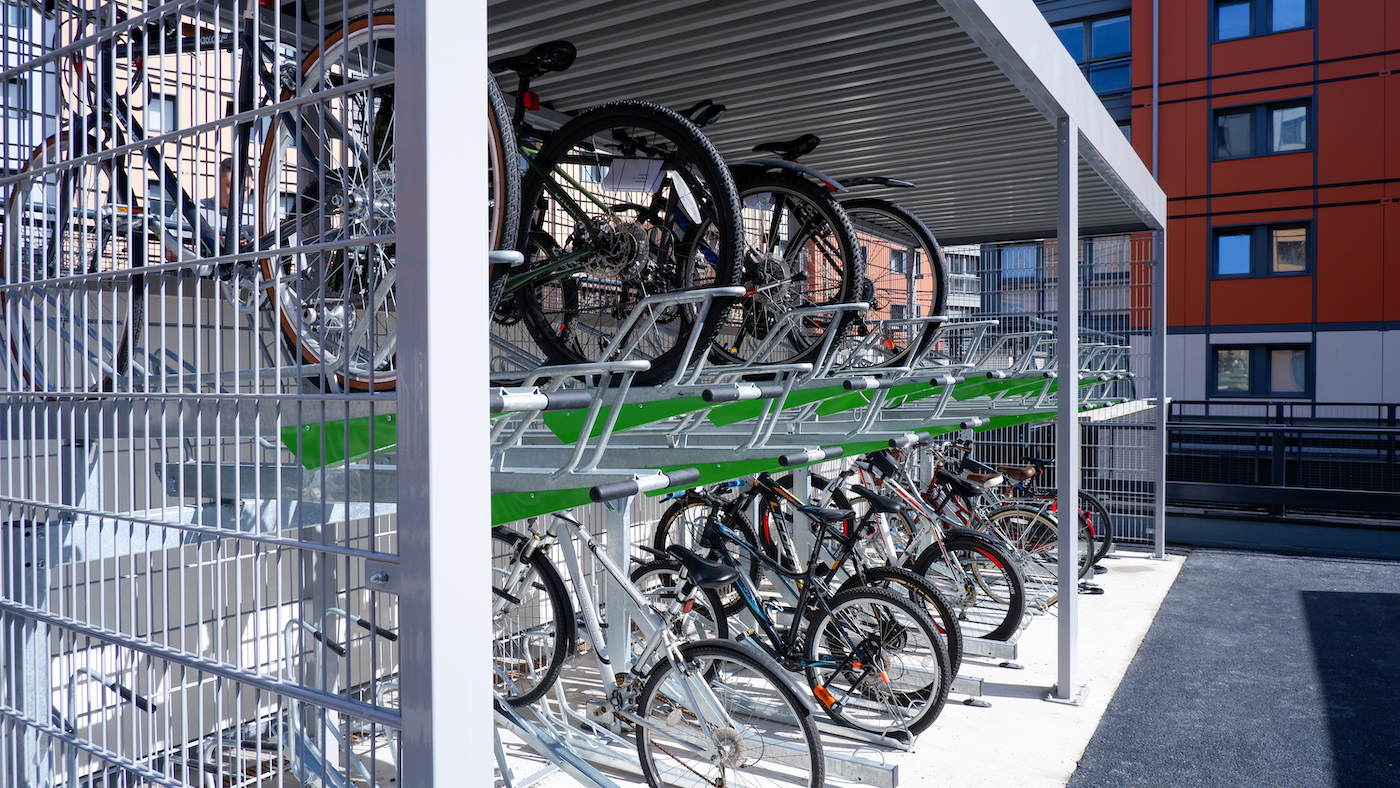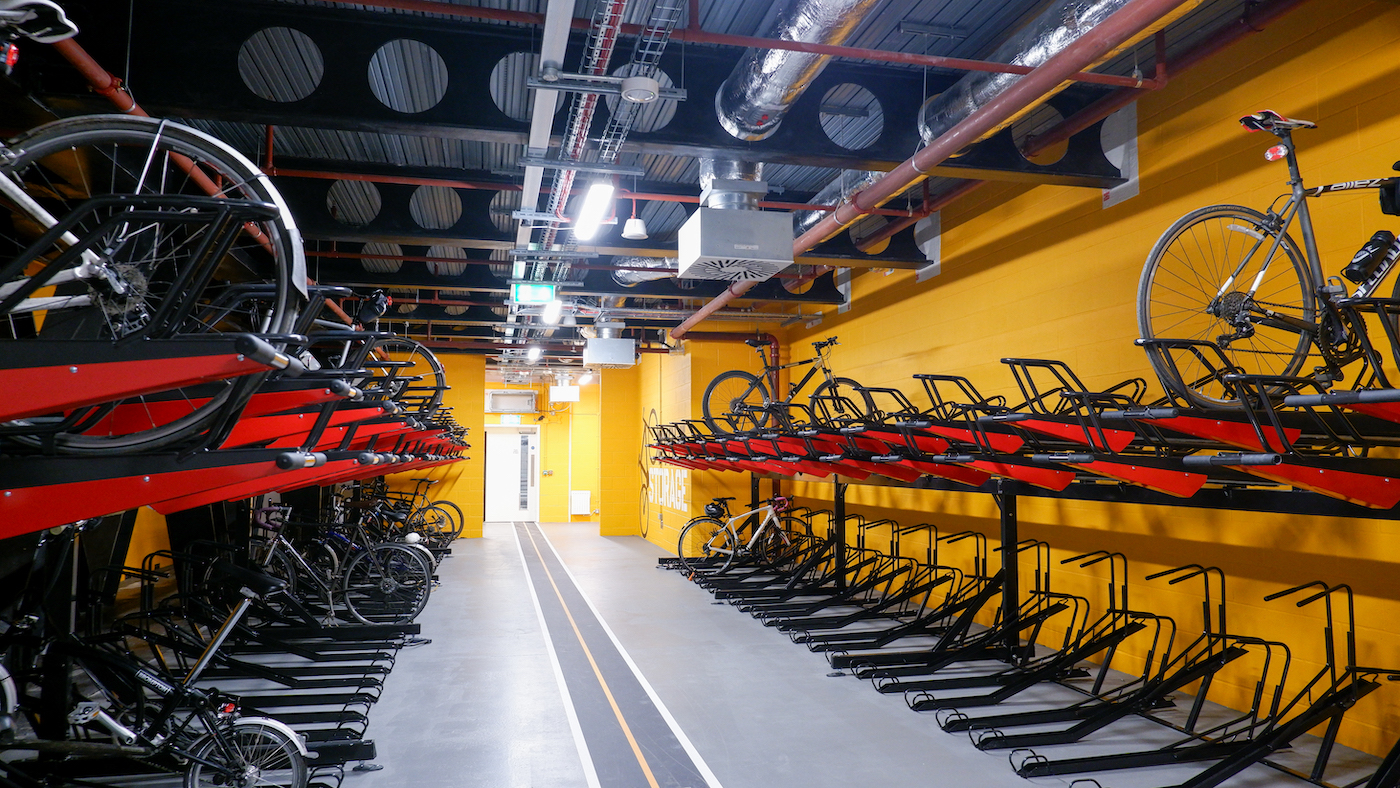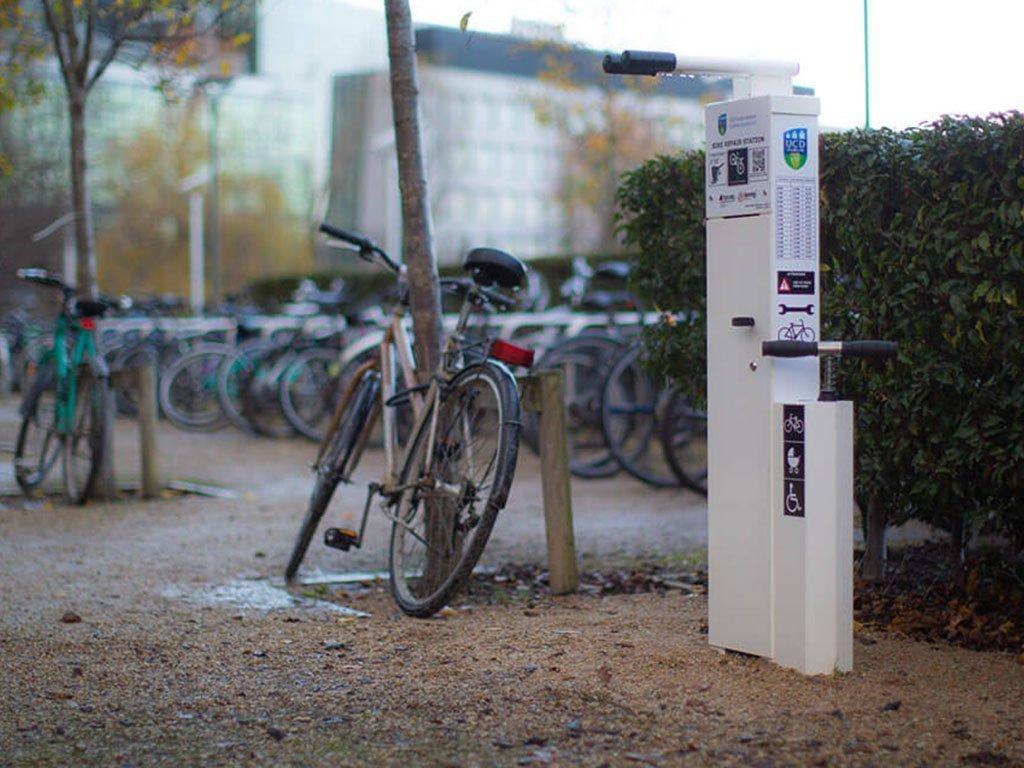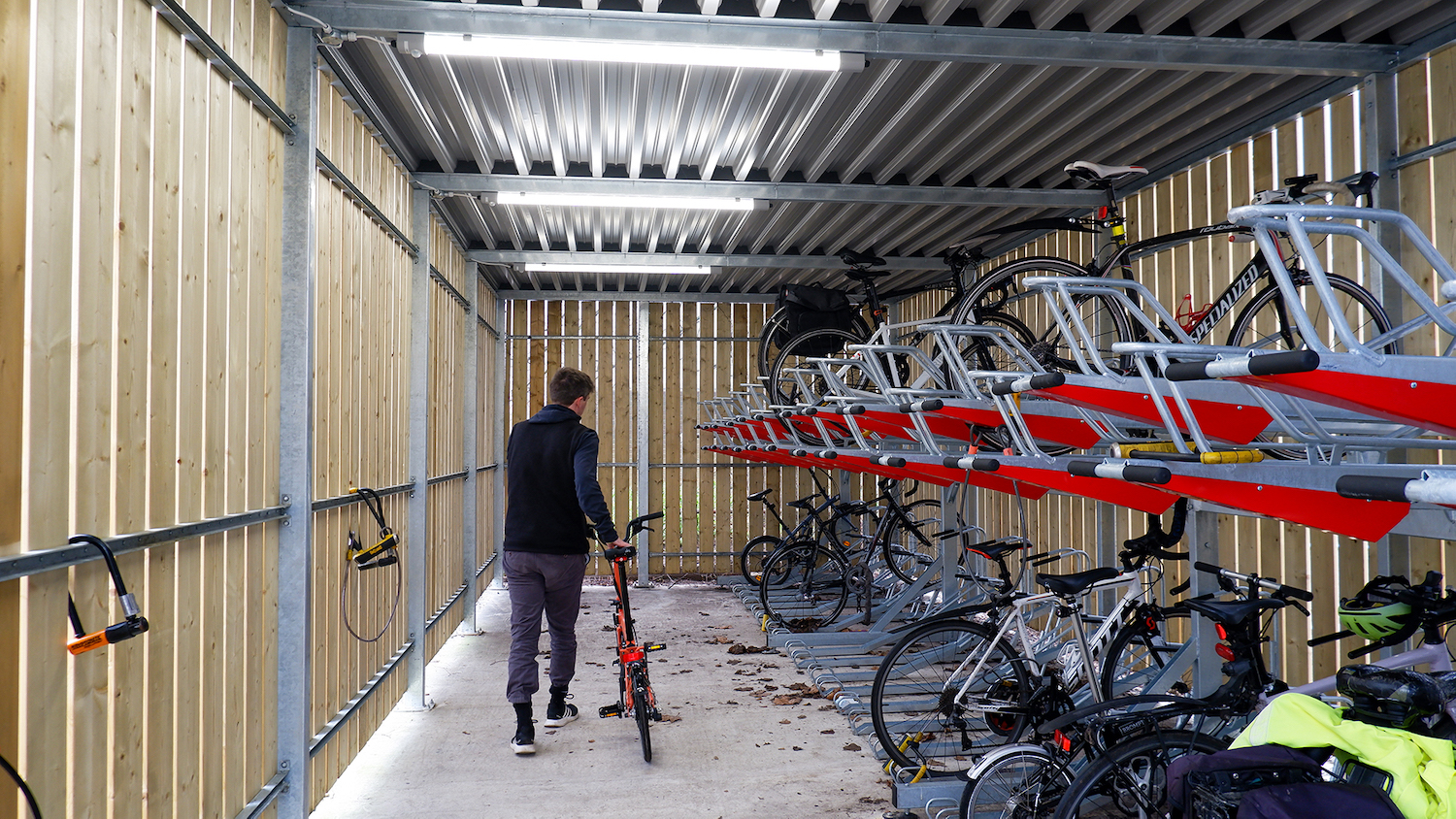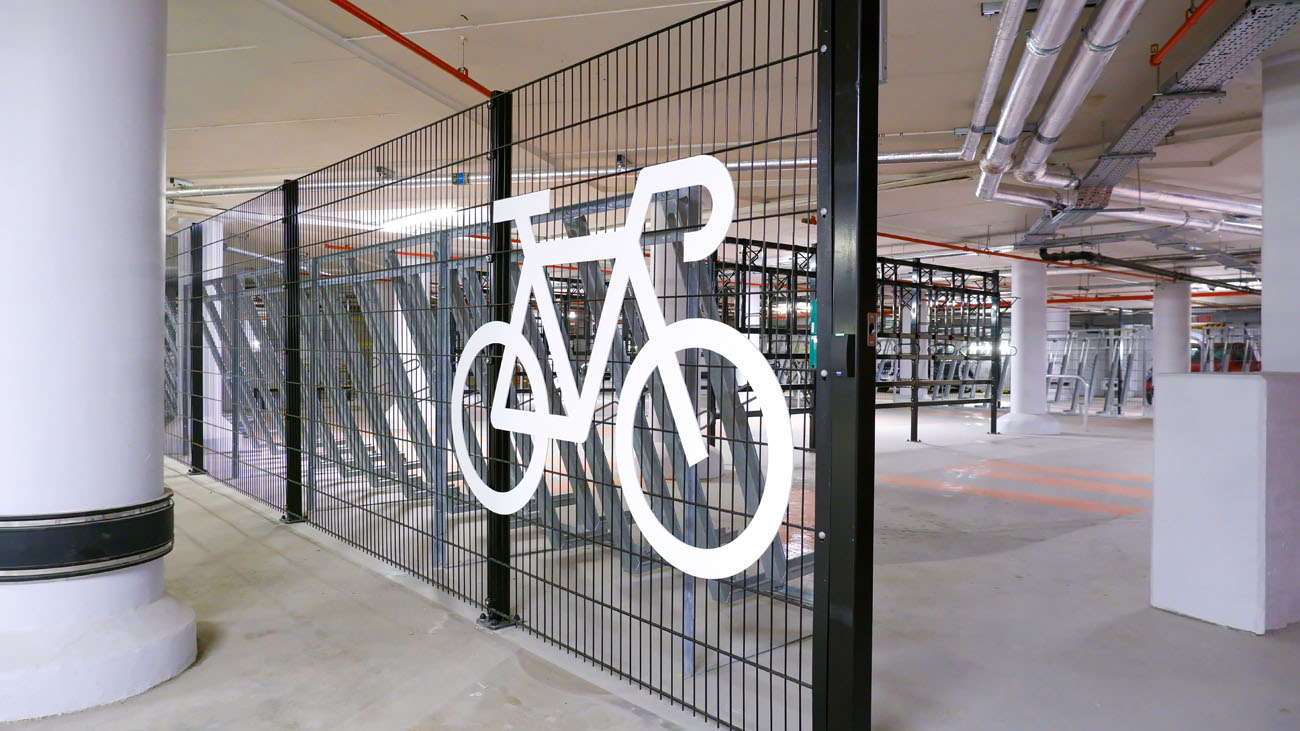Two-tier bike racks create a clever way to park and store more bikes, and originate from the de facto European cycling capital, the Netherlands. But understanding how to specify and install them properly makes a big difference.
We’ve talked to people who don’t realise how a two-tier bike rack works. We’ve also talked to people for hours about the optimal pressure for the gas spring inside the rack.
So whether you’re an expert in two-tier cycle parking, or you’re just discovering they exist, we have put together some guidance on the most important things to know.
What are two-tier bike racks?
In a nutshell, two-tier bike racks exist to help efficiently park and store more bicycles.
The way they work is first stacking two levels of parking on top of each other, while also staggering the heights of the bikes to fit bikes closer together without clashing.
Combining these space saving methods, it is possible to store twice the amount of bikes in the same footprint compared with Sheffield stands and other single-tier bike racks.
The first major benefit is that under one shelter, more bicycles can be securely parked, locked, and protected from the weather in a two-tier system. Likewise, in one secure basement of a high rise building, more bicycles can be protected.
Two-tier bike racks also help train stations, schools, and football stadiums provide many more short-term secure bicycle parking spaces for the public during peak rush hour.
